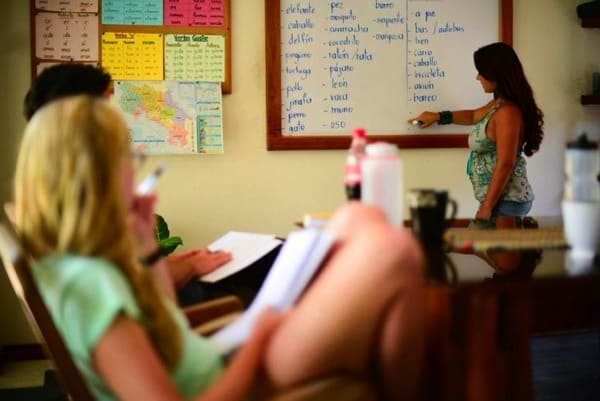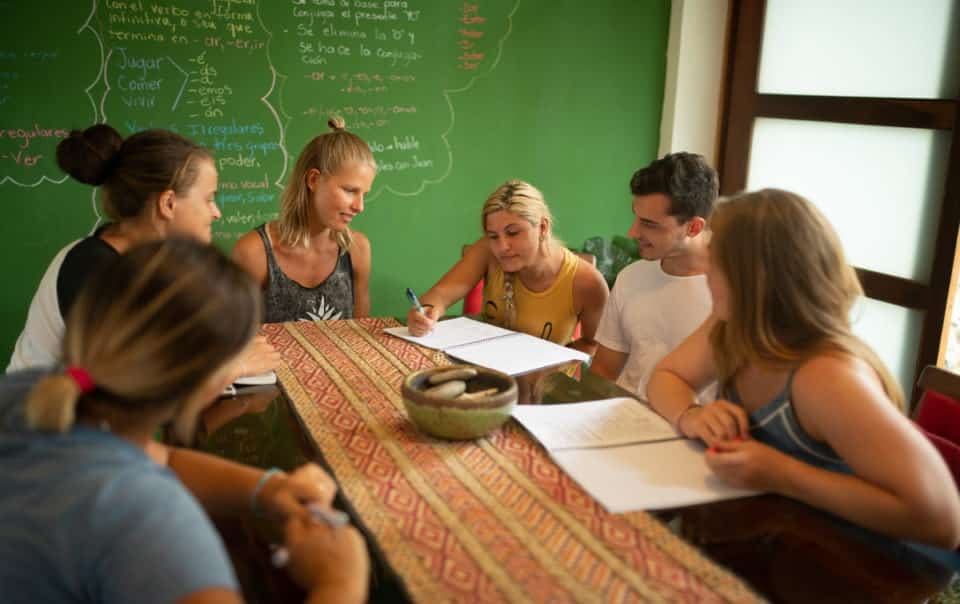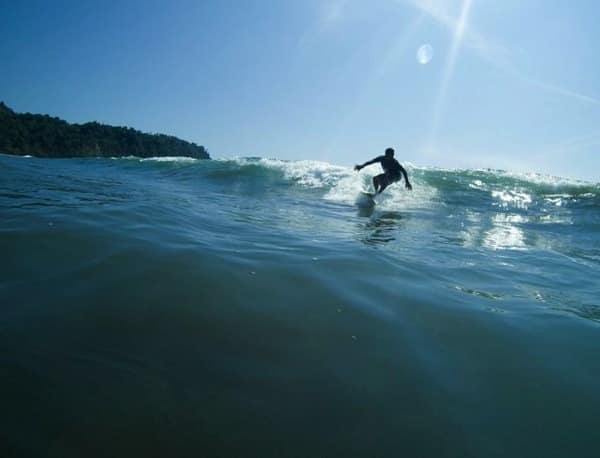
From learning how to pop up without using your knees, to determining how to choose the right wave, there are a lot of things you’ll learn at surf camp in Costa Rica. But if you don’t know a tube from a trough, you should probably study up a little before you venture out into the water.
While most of your learning should come from an experienced professional while you’re on your board, there are a number of things you can learn before you ever touch down in Costa Rica. Here are some basic terms and ideas to help you get off on the right foot once you arrive at surf camp in Costa Rica.
ANATOMY OF A WAVE
peak
The peak is the highest part of the wave, and where the wave will begin to break (either left, right or both directions). The closer you are to the peak, the sooner you can catch the wave.
shoulder
The shoulder is the part of the wave that breaks following the peak.
lip
The lip is the top edge of a cresting wave, and is the focal point for many surfers performing maneuvers.
pocket
The pocket is where the wave has the most power and thrust.
whitewater
Whitewater is the foamy part of a wave that has already broken.
trough
The trough is the lowest part between two successive waves.
tube
The tube is the hollow part of a breaking wave. It refers to the space between the face of the wave and the lip as the wave curls over. A tube is also referred to as a barrel.
wall
Named because it looks like a wall of water, the wall is a steep, unbroken portion of a wave in front of a surfer.
SURF ZONES
line-up
The line-up runs parallel to the beach and is where a majority of the waves break. This is also where many surfers wait for waves, making sure not to drift too far towards the inside or outside.
inside
The inside is the area between the line-up and the beach, and is where the smallest waves break. Don’t spend too much time in this area, or you’ll quickly tire from being hit by nearly every wave.
outside
The outside starts at the edge of the line-up and extends to the open ocean. Only really big waves break here. This zone is typically used for resting or for surfers looking to catch some monster waves.
TYPES OF WAVE BREAKS
left
When a wave breaks left. Use the perspective of a surfer in the water facing the beach.
right
When a wave breaks right. Use the perspective of a surfer in the water facing the beach.
closeouts
The term “closeout” refers to when the entire wave breaks at the same time. The only option you have when encountering a closeout is to head straight for the beach. If possible, avoid closeouts and save your energy for the better waves.
Want to learn more about Costa Rica surf camps? Check out School of the World’s Surf Camps for both Beginner and Intermediate/Advanced surfers. And don’t forget to follow us on Facebook and Twitter!
Check out all the fun we’re having, right now, at the School of the World!
to reach our office directly +506.2643.2462
to reach a guest +506.2643.1064
U.S. number that connects to our office
+1-305-517-7689
schooloftheworld (skype)
Check out all the fun we’re having, right now, at the School of the World!
to reach our office directly
+506.2643.2462
to reach a guest +506.2643.1064
U.S. number that connects to our office +1-305-517-7689
schooloftheworld (skype)





